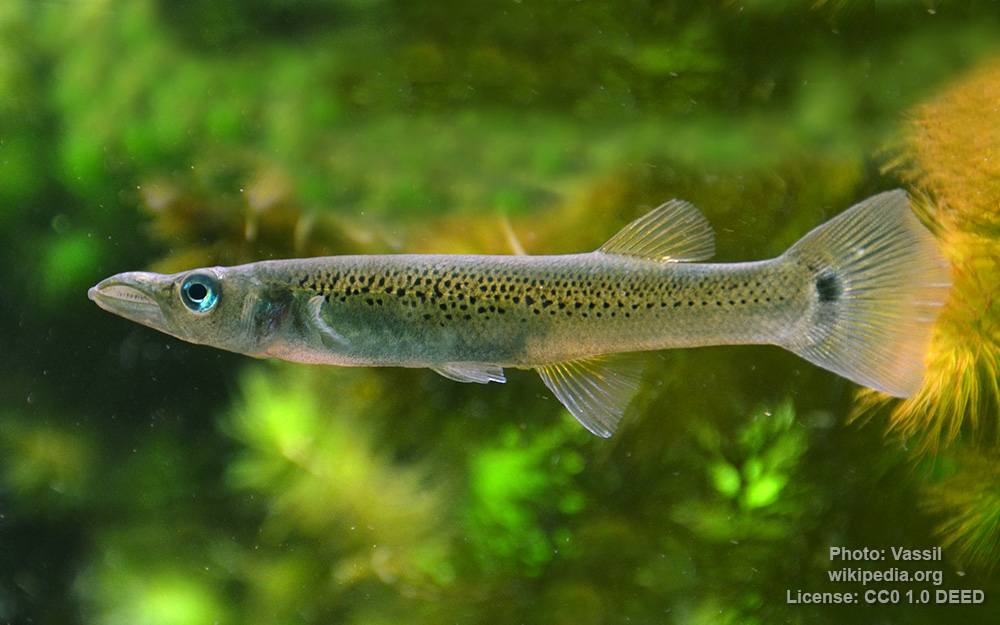Pike topminnow
(Belonesox belizanus)

Classification
General data
The pike topminnow (Belonesox belizanus), more commonly known as pike killifish and sometimes referred to as topminnow, is a species of poeciliid found from Mexico to Nicaragua.
It is the only known member of its genus. The pike topminnow was described in 1860 by Austrian ichthyologist Rudolf Kner, who gave the type locality as Belize.
Unlike most poeciliids (which tend to be generalists or micropredators), this is a highly specialized predator, with an extremely flexible upper jaw that enables it to take very large prey items for its size.
It grows typically to 10 cm (3.8 in) total length, exceptionally to 20 cm (7.9 in).
It has an elongated appearance with a flat back profile. The lower jaw is longer than the upper, and upturned. The pike topminnow has large eyes and a dorsal fin set far back on the body. It is a light, olive/brown color with light green iridescence and small black spots on the flanks. The belly is a lighter yellowish white. A dark spot is at the base of the caudal fin. They are also a livebearing fish.
Distribution
North and Central America: Laguna San Julian, northeast of Ciudad Veracruz in Mexico to Costa Rica. Southern Gulf of Mexico, southern Yucatan and along Central American coast south to Nicaragua. Introduced in freshwater in Florida











